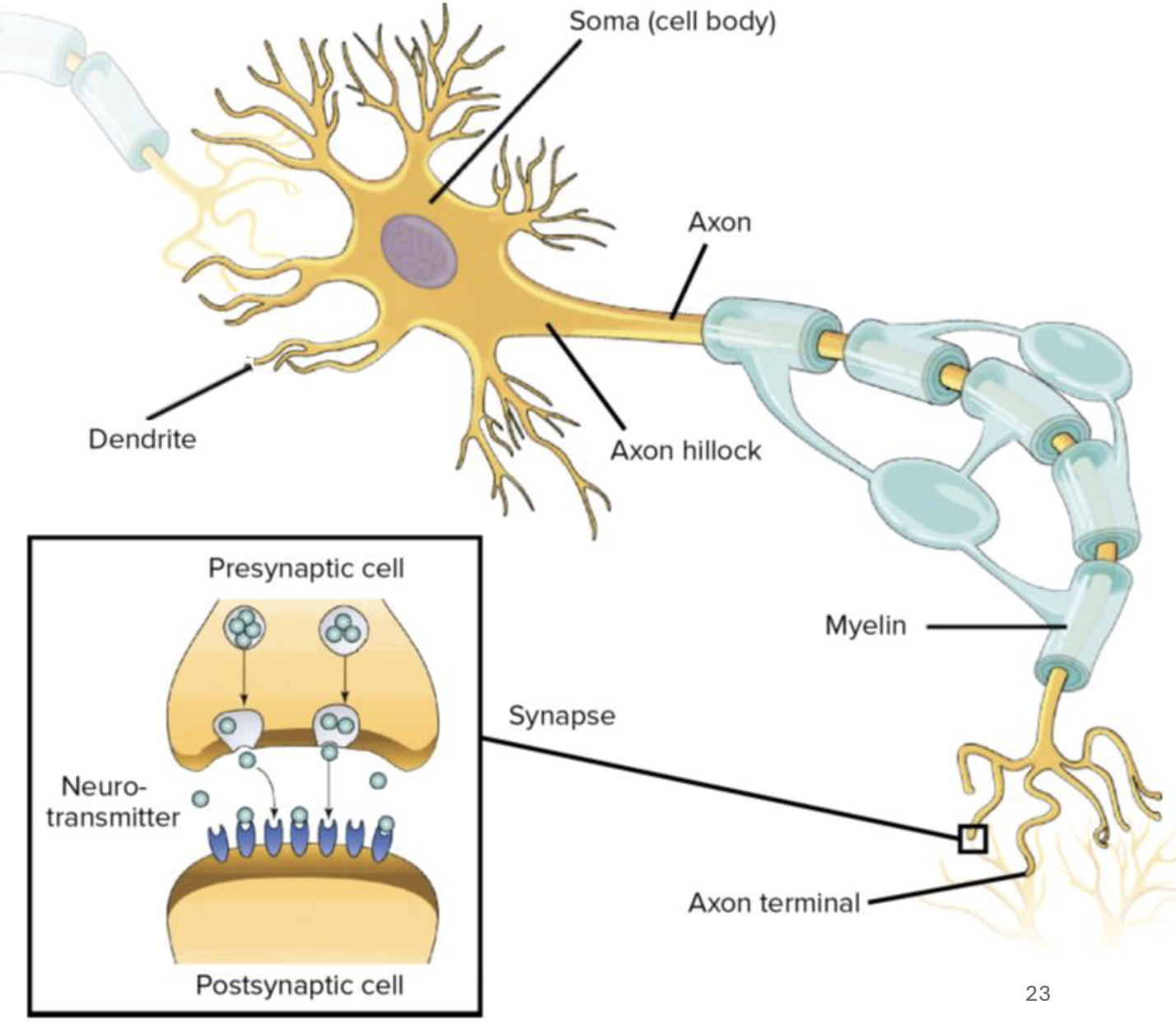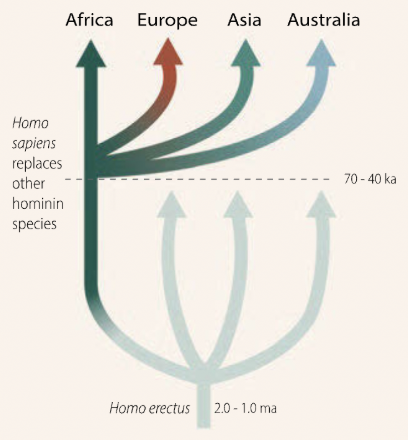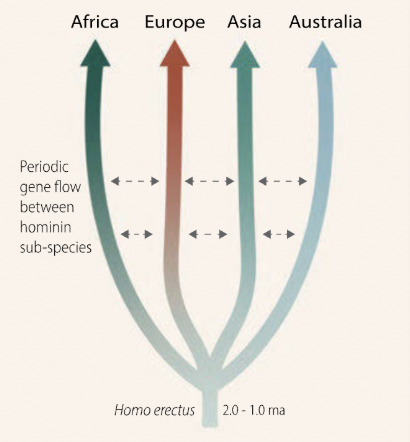PSYC 100 Midterm
1/238
There's no tags or description
Looks like no tags are added yet.
Name | Mastery | Learn | Test | Matching | Spaced |
|---|
No study sessions yet.
239 Terms
What is Psychology?
Psychological science is a discipline concerned with the study of behavior and mind, and their underpinning cognitive and physiological processes
Empiricism
At birth, the mind is an empty slate; nothing in terms of behavior and knowledge is inherited; all is learned
Monism
Because of the interaction problem, most philosophers and scientists believe that there is only one kind of reality (monism); neutral monists think that the mental and physical are two different ways to represent the same reality, which is neutral (neither mental nor physical)
Dualism
The body and the mind are of different quality, or composed of different elements; because of the idea that the mind/soul is immaterial, major religions are almost all dualist
Epiphenomenalism
Brain activity produces mind, but mind cannot influence brain activity
Interactionism
Certain basic abilities and knowledge are innate, but can be influenced by experience, which in turn can change what innate behaviors are expressed, which influences what will be experienced; this view is strongly supported by the available evidence
Materialism
Brain=Mind
Structuralism
Psychology is based on self-observation. The task of psychology is to analyze consciousness in its basic elements and investigate how these elements are related. The method for this analysis is introspection—systematic self-observation
Introspection
A technique to analyze conscious experience into its basic elements, sensations, and feelings
Functionalism
Psychology is concerned with function, not structure. Psychology should investigate the functions or purpose of consciousness, rather than it’s structure
Gestalt Psychology
The whole is more than the some of its parts. We perceive whole forms, not the parts of which they are constructed (example: the human face)
Behaviorism
Psychology is a natural science studying behavior; Behaviorism tries to determine what factors in the environment control behavior
Cognitive Revolution
Mind’s “Big Bang,” or cognitive revolution (~50,000 years ago); rapid shift to symbolic behavior, art, ornaments, complex tools, long-distance exchange, and possibly trade; increase in brain size and its consequences, planning, coordination, communication, and innovation
Psycho-Physiological Model
Psychological phenomena (experiences and consciousness) can be explained in terms of physical and biochemical processes. Any form of behavior can be fully described and explained by physiological structures and partly inherited physiological processes
Psychodynamic Model
All behavior can be explained in terms of drives or other intra-psychological forces. Human behavior arises from inherited, biologically inflexible drives and reflexes. Behavior results from tension and conflict, and it reflects the attempt to reduce these negative states. The term ‘motivation’ is the key concept of the psychodynamic approach: according to this model, actions will stop when needs are fulfilled because then motivation to act seizes
Psychoanalysis
Aims to make the unconscious conscious, so that its influence on behavior can be controlled
Id (Freud)
Follows the pleasure principle; attempts to avoid pain and increase pleasure; primal drives, basic nature (the animal within)
Ego (Freud)
Reason and self-control; tries to mediate between id and superego
Superego (Freud)
Morality, conscience, ideals, aspirations (your perfect self)
Behaviorist Model
The basic model is the relation between stimulus and response (S-R model); humans can be controlled by controlling antecedent conditions and consequences of behavior
The Behaviorist Manifesto
Psychology must be purely objective, excluding all subjective data or interpretations in terms of conscious experience. It is not the science of mental life, but rather the science of behavior. The goal of psychology should be to predict and control behavior, as opposed to describing and explaining mental states
Cognitive Model
Replaced behaviorism as the most influential model; cognitions are all processes that used to be labeled “mental” such as perception, thinking, decision-making, memory, problem-solving, etc.; humans create/construct their subjective reality
Humanistic Model
An approach that focuses on individual potential and personal growth
William James
The first educator to offer a psychology course in the US; called “the father of American psychology”
Wilhelm Wundt
One of the fathers of modern psychology; distinguished psychology as a science from philosophy and biology; was the first person to call himself a psychologist; was highly regarded as the “father of experimental psychology”
John Watson
American psychologist who popularized the scientific theory of behaviorism
Sigmund Freud
Founded the first major movement in clinical psychology in modern history; developed psychoanalysis; developed his theory observing patients suffering from psychological disorders; he believed that the same principles support “normal” and “abnormal” behavior; can be credited with exerting the strongest influence on current psychological thought in the Western world
Réne Descartes
Considered the father of modern philosophy; established a foundation for modern thought by asserting that the act of thinking proves one's existence; “I think, therefore I am”
The Mind-Body Problem
What is the relation between our mind and reality? Can we make statements about “what is out there” or only about the world created by our mind?
The body is a physical thing
The mind is a non-physical thing
The mind and body interact
Physical and non-physical things cannot interact
Structuralists vs. Functionalists
Structuralists and Functionalists often use the same technique; decomposing something into its constituent elements (Functionalists do this to arrive at a description of what the purpose is, not how it’s constructed.) Structuralists normally work in labs, while Functionalists are more interested in how people adapt their behavior to the demands of the real world surrounding them
Phi Phenomenon
An optical illusion of movement; when separate stationary stimuli are shown shortly after one another and we perceive them as continuously moving. When the interval between the shown stimuli (the interstimulus interval) is between 30 and 200 ms, humans have the perception of movement
Human Nervous System
A complex network of neurons, plus other (non-electrical) “glial” cells all signaling to each other; contains the central nervous system and peripheral nervous system
Central Nervous System
Consists of the brain and spinal cord, acting as the body’s central processing center
Spinal Cord
Connects brain and peripheral nervous system and enables spinal reflexes
Peripheral Nervous System
Consists of the somatic nervous system and the autonomic nervous system; connects the central nervous system to the rest of the body, carrying messages to and from the brain
Somatic Nervous System
Part of the peripheral nervous system that controls voluntary muscle movement and relays sensory information; commands from the brain to skeletal muscles
Autonomic Nervous System
Regulates internal bodily environment (such as functioning of heart and stomach)
Sympathetic Nervous System
“Fight-or-flight” system which controls the body when it is aroused
Parasympathetic Nervous System
“Rest-and-digest” system which controls the body during its normal resting state
Endocrine system
A network of glands and organs that produce and secrete hormones
Glial cell
Support cells in the nervous system, provide structural support, supply nutrients, insulate neurons, and defend against pathogens
Microglia
Immune surveillance and eat dead tissue
Astroglia (astrocytes)
Connect neurons to blood vessels
Oligodendrocyte
Myelin sheath production
Anatomy of neuron

Information flow in neuron
A chemical signal is received at the post-synaptic cell dendrites → The signal produces an electric current that spreads to the soma → If (and only if) enough current accumulates at the axon hillock, the neuron “fires” an action potential (electrical) → The action potential travels (“propogates”) down the axon towards the axon terminals → When the action potential reaches the pre-synaptic cell axon terminal, it releases neurotransmitters (chemical) → Neurotransmitters (ligands) bind to receptors on the post-synaptic cell dendrites
Sodium-potassium pump
An enzyme in the cell membrane that moves 3 sodium ions out of a cell and 2 potassium ions into the cell for every molecule of ATP it uses
Ion channels
Membrane proteins that allow specific ions to pass through the cell membrane
Action potential & action potential propagation
At rest, a neuron has a “resting (membrane) potential” of roughly -70 mV
There are more negative charges inside the neuron than outside of it
The membrane is “polarized”
Charge is carried by ions and they can be counted up
If you add positive charge inside the neuron–or just shock it a bit–you will make it less negative (“depolarization”)
If you shock it enough–or add enough positive charge–you will reach its threshold, and an action potential will occur
The neuron will become completely depolarized and will briefly become positive on the inside (more positive ions on the inside than the outside)
Then, the neuron becomes less positively charged (“hypopolarization”), goes negative on the inside again, overshoots a bit, and then returns to -70 mV
All of this occurs in 2-3 milliseconds
Synaptic cleft
The microscopic gap between two neurons where a chemical synapse is formed
Synaptic vesicles
Small, membrane-bound organelles found in the presynaptic terminal of neurons
Inhibitory neurotransmitter
Chemical messengers that decrease the likelihood of a neuron firing an action potential, essentially “calming” the nervous system
Excitatory neurotransmitter
Promotes/stimulates an electrical signal (action potential) in a receiving neuron, making it more likely to fire
Presynaptic membrane
The part of a neuron’s axon terminal that faces the synaptic cleft, where it releases neurotransmitters to communicate with another cell
Postsynaptic membrane
The membrane of a receiving nerve or muscle cell that contains receptors for neurotransmitters released by a presynaptic neuron
Hemisphere
The human brain is divided into two hemispheres—the left and the right—which are connected by the corpus callosum
Sulcus
Grooves on the brain’s surface which are crucial for visuospatial processing and tasks like arm and eye control
Gyrus
Ridges on the surface of the brain which are crucial for functions like emotions, attention, and language
Lobes
The human brain is divided into four lobes: frontal, parietal, temporal, and occipital
Fissure
Deep grooves or separations in the brain’s surface that divide the brain into distinct lobes
Corpus callosum
A thick band of nerve fibers that connects the two hemispheres of the brain
Contralateral hemispheric organization
The arrangement in which the two hemispheres of the brain control opposite sides of the body; right eye picks up left visual field and left eye picks up right visual field; left visual field information goes into the right hemisphere and right visual field information goes into the left hemisphere
Neocortex
Largest part of the cerebral cortex; responsible for complex higher-level functions like language, memory, consciousness, and advanced motor control
Frontal lobe
Largest part of the brain, located at the front of the head, responsible for higher-level cognitive functions, including personality, decision-making, planning, and motor-control
Parietal lobe
Brain region that processes somatosensory information like touch, temperature, and pain; is crucial for integrating sensory input to understand spatial relationships and guide movements
Occipital lobe
A part of the brain located at the back of the head, responsible for processing visual information and playing a crucial role in sense of sight
Temporal lobe
Part of the brain located near the ears that is crucial for processing auditory information, memory, and language
Somatosensory homunculus
A depiction of how the body is represented by the brain, proportional to the amount of cortex devoted to each body part
Motor homunculus
A distorted map of the human body with each body part’s size on the map proportional to the area of the primary motor cortex dedicated to controlling its intricate movements
Brain stem parts (medulla, pons, reticular activating system)
Medulla: a part of the brainstem that controls involuntary life-sustaining functions like breathing, heart rate, and blood pressure
Pons: a part of the brainstem that plays crucial roles in various psychological functions
Reticular activating system: a network of neurons in the brain stem that play a crucial role in maintaining consciousness, alertness, and attention
Cerebellum
Brain structure located at the back of the head that helps coordinate movement, balance, and posture
Thalamus
Key structure on top of the midbrain that plays a vital role in various psychological functions like sensory processing, motor control, consciousness, memory, emotion regulation, and attention and arousal
Basal ganglia
Subcortical brain structures primarily involved in motor control, but also play significant roles in learning, memory, emotions, and reward-based behaviors
Limbic system (prefrontal cortex, hippocampus, amygdala, hypothalamus, cingulate
gyrus)
Prefrontal cortex: located in the frontal lobe behind the forehead; plays a crucial role in functions like planning, decision-making, working memory, emotional regulation, social behavior, and personality traits
Hippocampus: is involved in long-term, episodic memory; the spatial memory region of the brain
Amygdala: small almond-shaped cluster of neurons in the temporal lobes; plays a crucial role in processing emotions—particularly fear, anger, and pleasure
Hypothalamus: small region located below thalamus, crucial for regulating hormone control, body temperature, sleep-wake cycle, hunger and thirst, emotions, motivations, stress responses, etc.
Cingulate gyrus: curved fold of the cerebral cortex on the inner surface of each cerebral hemisphere that wraps around the corpus callosum and plays a key role in processing pain and emotions, regulating autonomic responses, learning, memory, and decision-making
Split Brain Patients
Sperry and Gazzaniga, 1960s; conclusion was that the left hemisphere is lateralized for language
Nature
Human traits are primarily determined by inherited genetics
Nurture
Human traits are primarily determined by environmental factors
Nativism
Knowledge of the world is mostly innate, and determines certain abilities; this view is associated with the idea that nature (genes, etc.) determines behavior
Species
Animals that can interbreed and produce fertile offspring
Genus
Subdivision of a family–closely related species that evolved from a recent common ancestor
Homo erectus
The first human species to evolve a humanlike body, leave Africa to colonize Asia and Europe, and to wield fire
Homo neanderthalensis
Neanderthals are an extinct group of archaic humans who inhabited Europe and Asia until roughly 40,000 years ago
Homo sapiens
Humans (homo sapiens) are primates that belong to the biological family of great apes and are characterized by hairlessness, bipedality, and high intelligence
Out of Africa hypothesis
Genetic evidence strongly suggests that modern humans and their hominid predecessors originated in Africa; as modern humans, we are, in essence, African migrants; clearly, present-day Africans have little to no Neanderthal DNA, in line with the out-of-Africa migration hypothesis; the out of Africa hypothesis argues that modern humans originated recently in Africa, replacing archaic populations elsewhere; 60 thousand years ago, modern humans emerged and began leaving Africa

Multiregional hypothesis
The multiregional hypothesis proposes regional continuity with gene flow, maintaining one species;

Agricultural Revolution
Also called Neolithic Revolution; for 100 thousand years, hominids depended on hunting and gathering for survival; about 12 thousand years ago, agriculture emerged, and animals were domesticated
Scientific Revolution
Galileo, Bacon, Descartes, and others developed the scientific method to understand nature with the aim of controlling it; started about 500 years ago
Anthropocene
Proposed new epoch (epoch = an event or time that begins a new period or development); outcomes of agricultural and scientific revolution led to a new era in Earth's history, characterized by human ability to modify entire biosphere, changing climate, geology, ecosystems, etc.; maybe since 12 thousand years ago, maybe since the 1960s
Gene
The functional units of heredity; they are composed of DNA and specify the structure of proteins; located on chromosomes
Genotype
The complete set of an organism’s genes
Phenotype
The overt characteristics of an organism; the properties we can observe (resulting from what genes are expressed); a product of genotype, environmental factors, and experiences
Epigenetics
The study of stable changes in the expression of a particular gene occur without changes in DNA base sequences
Chromosome
A rod-shaped structure of DNA and protein in the cell nucleus that carries the genes
Nucleus
A cluster of neurons in the central nervous system with the same or related functions
DNA
The genetic material that carries the instructions for an organism’s development and functioning
Allele
A variation of a gene that occupies the same position on a chromosome
Innate behaviors of humans
Humans come with a set of inborn abilities; because of the way our species evolved, many abilities, tendencies, and characteristics are present at birth in all human beings and/or develop rapidly as a child matures
Baby scheme/Kindchenschema
Certain facial characteristics have a high appeal to humans, inducing perception of “cuteness,” eliciting caretaking behavior; the perception of cuteness emerges early in human development (3-6 years); commonly found in both human and animal infants
Piloerection
Contraction of tiny arrector pili muscles causes hair to stand up; helps mammals with temperature regulation–erect hairs trap warm air for insulation; raised fur makes animals appear larger and more threatening; activated by the sympathetic nervous system during fear, danger, awe, surprise, strong emotions, and certain music
Preference for cover
Unconscious use of environmental features to provide cover; children love to build caves, forts, hideaways, etc.; most humans prefer to sit with their back against a wall; in an empty room, humans first occupy seats at the corners and at the borders/edges; if available, humans prefer higher lookouts for dwelling